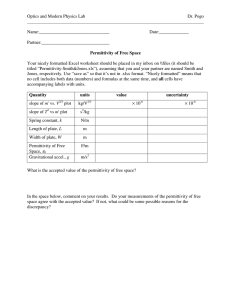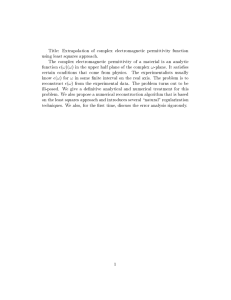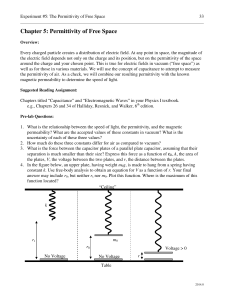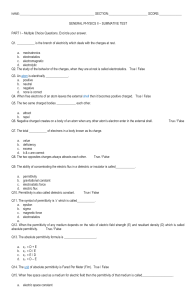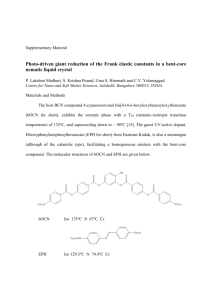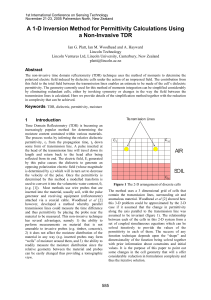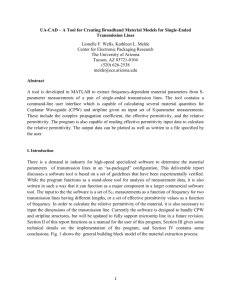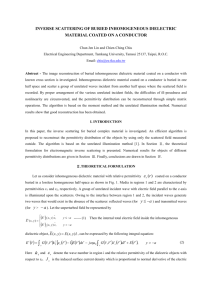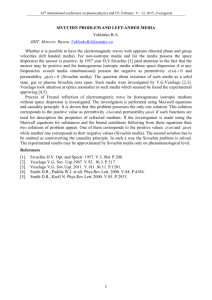Field-effect induced tunability in hyperbolic metamaterials
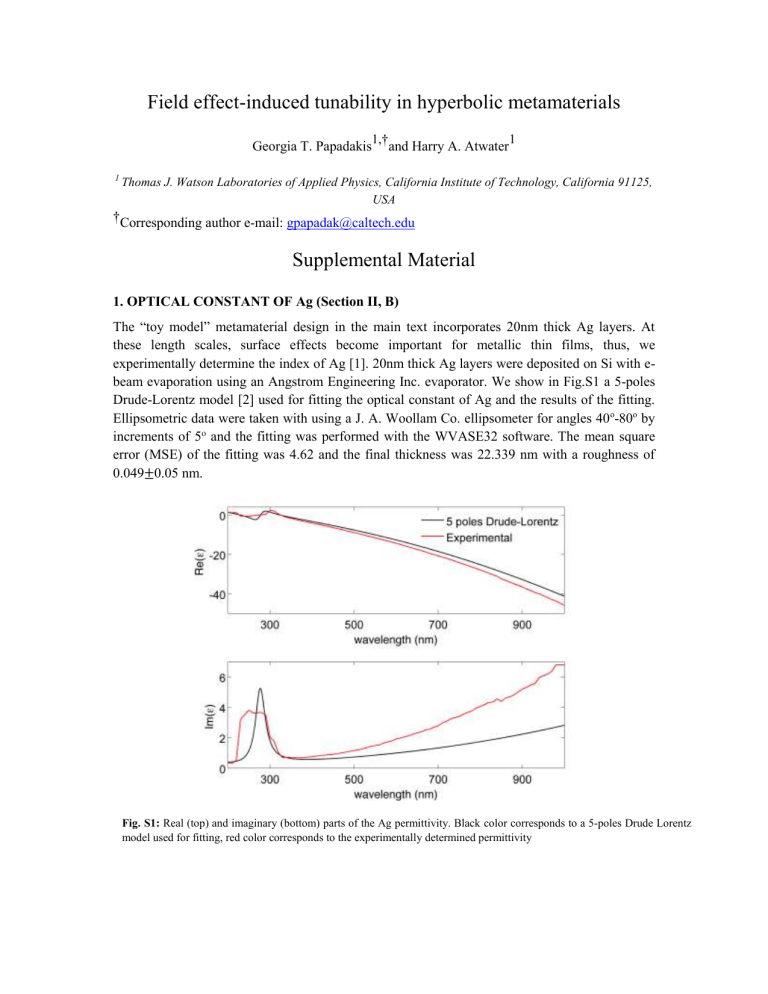
Field effect-induced tunability in hyperbolic metamaterials
Georgia T. Papadakis
1, † and Harry A. Atwater
1
1
Thomas J. Watson Laboratories of Applied Physics, California Institute of Technology, California 91125,
USA
†
Corresponding author e-mail: gpapadak@caltech.edu
Supplemental Material
1. OPTICAL CONSTANT OF Ag (Section II, B)
The “toy model” metamaterial design in the main text incorporates 20nm thick Ag layers. At these length scales, surface effects become important for metallic thin films, thus, we experimentally determine the index of Ag [1]. 20nm thick Ag layers were deposited on Si with ebeam evaporation using an Angstrom Engineering Inc. evaporator. We show in Fig.S1 a 5-poles
Drude-Lorentz model [2] used for fitting the optical constant of Ag and the results of the fitting.
Ellipsometric data were taken with using a J. A. Woollam Co. ellipsometer for angles 40 o -80 o by increments of 5 o and the fitting was performed with the WVASE32 software. The mean square error (MSE) of the fitting was 4.62 and the final thickness was 22.339 nm with a roughness of
0.049
± 0.05 nm.
Fig. S1: Real (top) and imaginary (bottom) parts of the Ag permittivity. Black color corresponds to a 5-poles Drude Lorentz model used for fitting, red color corresponds to the experimentally determined permittivity
2. TUNABLE PERMITTIVITY OF INDIUM TIN OXIDE (Section II, B)
It is well established that in the visible-near IR regime the permittivity of ITO is sufficiently described by the Drude model [3-8]. e = e
¥
w
2 p w
2 + i wg
, with w
2 p
=
Ne e
0 m eff
Based on previous experimental work [4, 5, 7], the following parameters have been used to model
the permittivity of ITO for varying carrier concentration dielectric permittivity that is taken to be equal to 3.4,
N . e
¥
, which is the high-frequency g
is the electron scattering frequency and is considered here to be equal to 1.8
×
10 14 / s . Finally, m eff
=
0.35
m e where m e
is the electronic rest mass.
Fig. S2 : Permittivity of ITO for different considered carrier concentrations
We emphasize here that, relative to previous experimental work of [4] and similar estimates for
AZO [9], we underestimate the Debye length of previous experimental findings of 5nm to be
2.5nm for which we perform our calculations. The sensitivity analysis in Part III of the main text provides estimates of the tunability of effective metamaterial parameters for different Debye lengths.
References
1
2
3
Y. K. V. Reddy, D. Mergel, S. Reuter, V. Buck, and M. Sulkowski, Journal of
Physics D: Applied Physics 39, 1161 (2006).
A. D. Raki, A. B. Djuri?i, J. M. Elazar, and M. L. Majewski, Appl. Opt. 37, 5271
(1998).
X. Liu, J. Park, J.-H. Kang, H. Yuan, Y. Cui, H. Y. Hwang, and M. L. Brongersma,
Applied Physics Letters 105, 181117 (2014).
4
5
6
7
8
9
E. Feigenbaum, K. Diest, and H. A. Atwater, Nano Letters 10, 2111 (2010).
H. W. Lee, G. Papadakis, S. P. Burgos, K. Chander, A. Kriesch, R. Pala, U.
Peschel, and H. A. Atwater, Nano Letters 14, 6463 (2014).
F. Yi, E. Shim, A. Y. Zhu, H. Zhu, J. C. Reed, and E. Cubukcu, Applied Physics
Letters 102, 221102 (2013).
A. P. Vasudev, J.-H. Kang, J. Park, X. Liu, and M. L. Brongersma, Opt. Express
21, 26387 (2013).
F. Michelotti, L. Dominici, E. Descrovi, N. Danz, and F. Menchini, Opt. Lett. 34,
839 (2009).
L. Zhaolin, Z. Wangshi, and S. Kaifeng, Photonics Journal, IEEE 4, 735 (2012 and references therein).

